|
|
Ta Prohm is a temple at Angkor, Cambodia, built in
the Bayon style largely in the late 12th and early
13th centuries. Located approximately one kilometre
east of Angkor Thom and on the southern edge of the
East Baray, it was built by King Jayavarman VII as
a Mahayana Buddhist monastery and university. Unlike
most of the other Angkor temples, Ta Prohm has been left
in much the same condition in which it was found: the
photogenic and atmospheric combination of trees growing
out of the ruins and the jungle surroundings have made
it one of Angkor's most popular temples with visitors.
|
|
Face tower on the fifth western gopura.
|
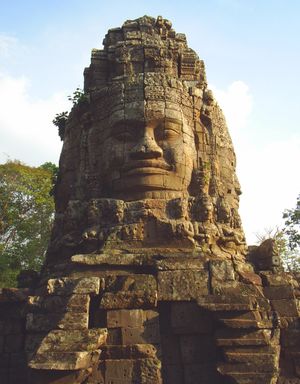
|
|
History
|
Ta Prohm was one of the first temples begun in Jayavarman VII's massive
building program. The temple's modern name means "old Brahma", but the
original name was Rajavihara (royal temple). It was centred on veneration
of the king's family: the main image (of Prajnaparamita, the personification
of wisdom, installed in 1186) was modelled on his mother, while the two
satellite temples in the third enclosure were dedicated to his guru (north)
and his elder brother (south ). Expansions and additions continued as late
as the rule of Srindravarman at the end of the 13th century. The temple's
stele recorded that the site was home to more than 12,500 people, with a
further 80,000 in surrounding villages helping to supply the institution.
The temple amassed considerable riches, including gold, pearls and silks.
After the fall of the Khmer empire, the temple fell into neglect for centuries.
When the effort to conserve and restore the temples of Angkor began in the
early 20th century, Ta Prohm was chosen by the École française d'Extrême-Orient
to be left largely as it was found as a "concession to the general taste for
the picturesque" (Glaize). Glaize writes that this temple was chosen because
it was, "one of the most imposing and the one which had best merged with the
jungle, but not yet to the point of becoming a part of it - as but one specimen
typical of a form of Khmer art of which there were already other models".
Nevertheless much work has been done to stabilise the ruins and to permit
access, in order to maintain "this condition of apparent neglect" (Freeman
and Jacques).
The temple was used as a location in the film Tomb Raider. Although the film
took visual liberties with other Angkor temples, its scenes of Ta Prohm were
quite faithful to the temple's actual appearance, and made use of its eerie
qualities.
|
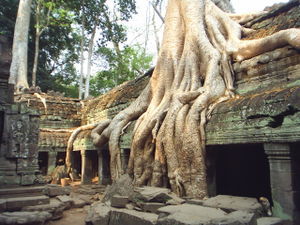
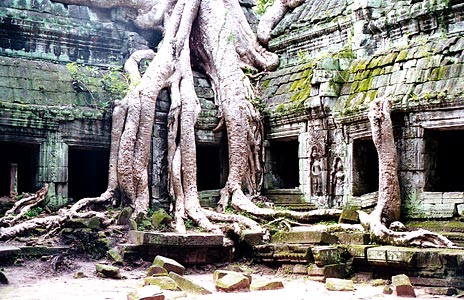
|
|
|
|
Roots of a silk cotton tree running along the gallery of the second enclosure.
The trees growing out of the ruins are a distinctive feature of the temple
for the modern visitor. Freeman and Jacques note that they "have prompted more
writers to descriptive excess than any other feature of Angkor". Some of these
trees are strangler figs, while others belong to the species Tetrameles
nudiflora or silk-cotton tree. Three prominent examples of the latter are on
the west side of the fourth eastern gopura; northwest of the third eastern
gopura; and along the east side of the southern half of the second enclosure's
west wall.
|
|
The Site
|
The basic layout of Ta Prohm is that of a typical "flat" Khmer temple, with
five rectangular enclosing walls around a central sanctuary. Like most Khmer
temples, Ta Prohm is oriented to the east, so the temple proper is set back
to the west along an elongated east-west axis. The outer wall of 1000 by 650
metres encloses an area of 650,000 square metres that would have been a
substantial town, but which is now largely forested. There are entrance
gopuras at each of the cardinal points, although access today is now only
possible from the east and west. Each gopura had face towers (similar to
those at the Bayon) added during the 13th century, although some of these
have collapsed. There were moats inside and outside the fourth enclosure.
The three inner enclosures of the temple proper are galleried, while the
corner towers of the first enclosure form a quincunx with the tower of the
central sanctuary. This basic plan is complicated for the visitor by the
circuitous access necessitated by the temple's partially collapsed state,
as well as by the large number of other buildings, some being later
additions. The most substantial of these other buildings are the libraries
in the southeast corners of the first and third enclosures; the satellite
temples on the north and south sides of the third enclosure; the Hall of
Dancers between the third and fourth eastern gopuras; and a House of Fire
east of the fourth eastern gopura.
|
|
Plan of the temple, showing the relative locations of the main features.
|
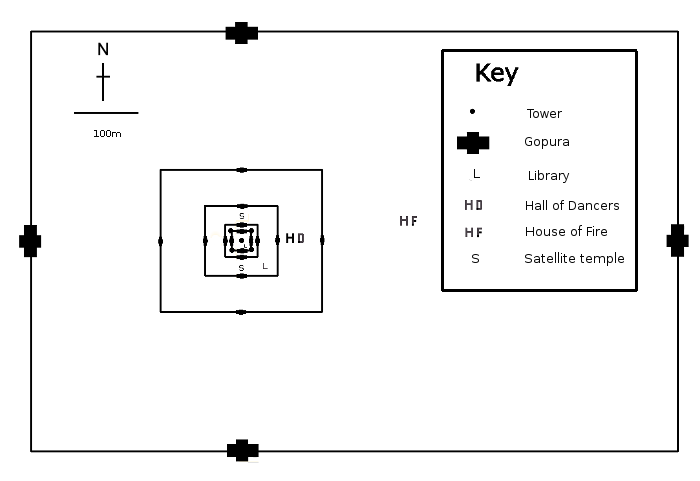
|
|
FEEDBACK MAP
|
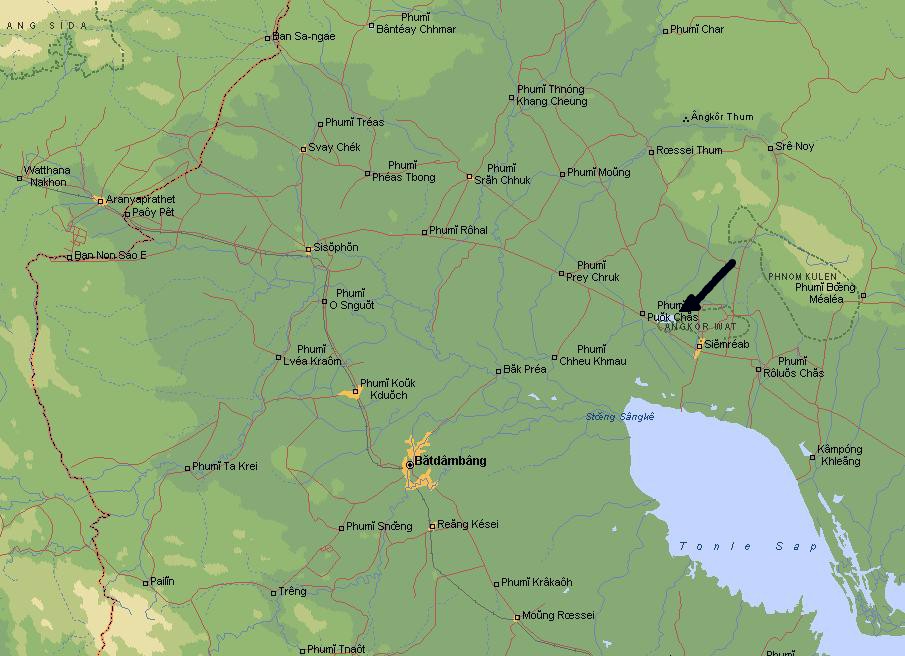 |






